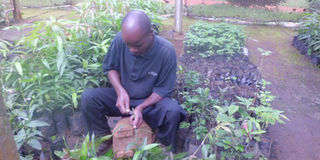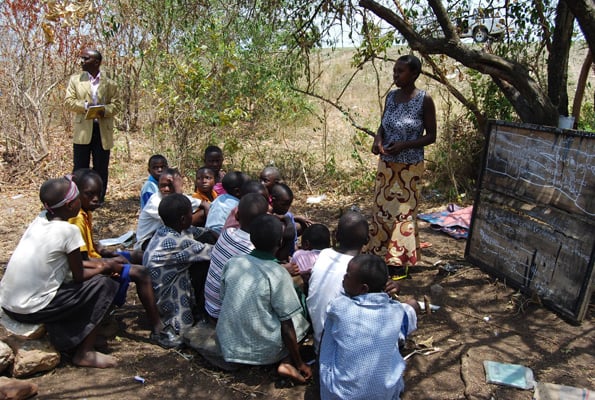Prime
Grafting: A way to boost harvests from low-quality tropical fruit trees

A breeder grafting mangoes in a green house. Photos by Lominda Afedraru
What you need to know:
With this technology, a fruit tree that has less desirable characteristics can be transformed to yield high quality fruits.
Many tropical fruit trees, including mango, avocado and orange, perform better when farmers merge good fruiting characteristics with resistance to disease. To accomplish this, a single stem is placed on to a root stock tree.
The stem eventually merges with the root stock to form the main trunk of the tree and from then on that tree bears fruit similar to the plant the graft was taken from.
Bigger harvests
Grafting transforms low quality fruit trees into the high yielding commercial varieties. As such, these trees would be a better source of income as fruit producers each year than their value as wood products.
It will ensure that the nature of the plant will be maintained and can perpetuate the specific variety of the plant yet if a farmer plants seeds, the resulting plant will not be identical.
The grafting technology, say scientists at Mukono Zonal Agricultural Research and Development Institute (Muzardi), has been embraced by farmers majoring in fruit growing because they are able to get bigger harvests leading to better earnings.
Exploring options
Ms Robina Gafabusa, a research technician at Muzardi, leads a team breeding grafted fruits such as mangoes, oranges, avocado and passion fruits, which is sold out to farmers mostly in the Lake Victoria Crescent area.
For the case of mangoes, the team is grafting varieties from Kenya and Thailand with the indigenous variety, commonly known as Kagogwa. With passion fruits, it is better to graft the yellow type of passion fruits and those with a hard cover.
This is because their stems are strong and can therefore hold onto the mother stem. They are also exploring options of grafting specific varieties of tomatoes on Nakkati vegetable for improved yields
Doing well
During the grafting exercise, Ms Gafabusa and her team, cut the mother root with a sectuer, match it with the hybrid fruit cuttings and tie them using white polythene to avoid entry of water.
Covering the grafted scion enables the plant to absorb water through translocation and also allows photosynthesis to take place.
It takes one month for a grafted part to attach and after this occurs, the scientists remove the polythene to allow normal growth of the plant. It takes about two years for such a plant to be ready for harvesting.
Farmers are advised to slice off the buds with pruning tools, leaving only about half of an inch of stem from each, cut the bottom portion of the branch at an angle, exposing the inner bark on one side of the angle cut.
At Muzardi, the team has been working eight varieties of mangoes and five are doing well. A seedling of grafted mango is sold at Shs3,000 while avocado, orange and passion fruit are at Shs1,000.
Not all compatible
Dr Moses Adebayo from the University of Ogbomoso in Nigeria, explains that grafted plants have an added advantage of the genes from the plant being grafted for improved yields remains intact.
This means there is no crossing of genes from the root plant to the grafted plant.
“If a farmer chooses to grow grafted mango varieties, which are high yielding and contain good traits, they will grow with a combination of these same characteristics even if they were grafted on a mother plant with low-yielding characteristics,” he said
However, not all fruit tree types are compatible for grafting. For instance, a mango cannot be grafted to an apple tree and an apple tree cannot be grafted to a plum tree. Only trees of the same genus are compatible.




